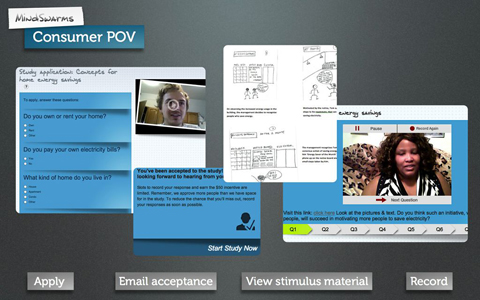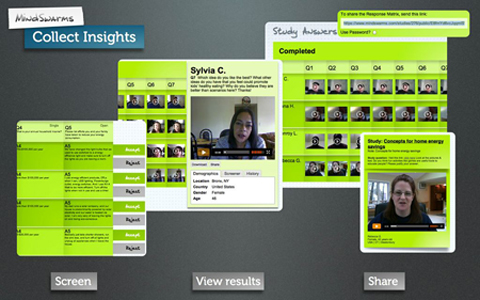Press Release: Engaging Online Crowds in the Classroom Could Be Important Tool for Teaching Innovation
Carnegie Mellon, Northwestern Educators Report on Pilot Study
Contact: Byron Spice / 412-268-9068 / bspice@cs.cmu.edu
P ITTSBURGH-Online crowds can be an important tool for teaching the ins and outs of innovation, educators at Carnegie Mellon University and Northwestern University say, even when the quality of the feedback provided by online sources doesn't always match the quantity.
ITTSBURGH-Online crowds can be an important tool for teaching the ins and outs of innovation, educators at Carnegie Mellon University and Northwestern University say, even when the quality of the feedback provided by online sources doesn't always match the quantity.
In a pilot study that invited the crowd into their classrooms, Carnegie Mellon and Northwestern instructors found that input from social media and other crowdsourcing sites helped the students identify human needs for products or services, generate large quantities of ideas, and ease some aspects of testing those ideas.
Finding ways to incorporate online crowds into coursework is critical for teaching the process of innovation, said Steven Dow, assistant professor in Carnegie Mellon's Human-Computer Interaction Institute. He and his co-investigator, Elizabeth Gerber, the Breed Junior Professor of Design at Northwestern University, will present their findings April 29 at CHI 2013, the Conference on Human Factors in Computing Systems, in Paris.
 "Educating students about innovation practices can be difficult in the classroom, where students typically lack authentic interaction with the real world," Dow explained. "Social networks and other online crowds can provide input that students can't get otherwise. Even in project courses, feedback is limited to a handful of individuals, at most."
"Educating students about innovation practices can be difficult in the classroom, where students typically lack authentic interaction with the real world," Dow explained. "Social networks and other online crowds can provide input that students can't get otherwise. Even in project courses, feedback is limited to a handful of individuals, at most."
At the same time, tapping the power of online communities has itself become part of the innovation process, Gerber said, with many entrepreneurs turning to sites such as Kickstarter and IndieGoGo to get initial support.
"The Internet affords access to online communities to which we might not ever have access," she said. "Future innovators need to know how to find and respectively engage with these communities to get the resources they need."
Dow and Gerber have received a National Science Foundation grant to study the use of crowd technologies in the classroom. They have created a website, http://crowddriveninnovation.com/, to share ideas and resources regarding the use of crowd-based resources in innovation education.
In the pilot study, they explored the use of crowds with 50 students enrolled in three innovation classes offered by Carnegie Mellon and Northwestern. Students worked in groups of 3-4 on projects.
Students found online forums, such as Reddit, were very helpful in discovering unmet needs. A group working on public transit, for instance, found lots of people talk about transit on social media, Dow said. "It also helps them figure out what questions to ask users in more traditional interviews," he added.
An attempt to generate ideas through Amazon Mechanical Turk, which pays workers small fees for performing micro-tasks, produced little of use. "Understanding context is critical for ideation and this is difficult to do in a micro-task work environment," Gerber said. What did work effectively, she said, was asking people from the user research site Mindswarms to reflect on students' storyboard concepts.
In the final class assignment, to help students learn how to pitch ideas, the teams created a crowdfunding campaign through Kickstarter or IndieGoGo. But that made many students uncomfortable.
"The main problem with the crowdfunding piece of the class was that few students, as far as I could tell, actually wanted to raise the money," one student explained. "Most students in the class have other plans and weren't planning to continue working on their idea."
"In a strange way, this discomfort validated our hypothesis that engaging external crowds would bring the reality of innovation practices into the classroom," Dow said. "It was almost too real."
One solution, Dow and Gerber said, may be to have students prepare a crowdfunding campaign, but not launch it.
###
Images Courtesy of Mindswarms. Students used the site to obtain feedback on their ideas.